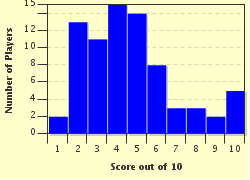Quiz Answer Key and Fun Facts
1. Historians agree that the real cause of the War of 1812 was the Royal Navy's impressment of American sailors.
2. On the morning of July 17, 1812, a small British force led by Capt. Charles Roberts surprised the U.S. garrison of Fort Mackinac and captured this strategic island post at the junction of Lake Michigan and Lake Huron. How was Roberts able to pull off this coup?
3. U.S. troops were often thrown into panic by Indians fighting on the British side. But which fighters on the U.S. side did British soldiers find particularly nasty and disturbing?
4. Except for Gen. Wilkinson's advance from Lake Ontario toward Montreal late in 1813, U.S. forces never moved into the St. Lawrence valley in strength to contest the river lifeline connecting Upper and Lower Canada. British officers were amazed, since the important town of Ogdensburg NY was located on the south bank of the river. Which answer best explains the failure of the Americans to exploit this stunningly obvious strategic opportunity?
5. The "Dartmoor Massacre" occurred when British guards opened fire on rioting U.S. POWs confined at Dartmoor Prison in Devonshire. But when did this happen?
6. At end of 1814 Federalist delegates from the New England states, not at all happy with "Mr. Madison's War," met to discuss constitutional amendments to limit the power of the South and the Republicans. Where was this meeting held?
7. What was unusual about the battle of Lundy's Lane, fought near Niagara Falls on July 25, 1814?
8. U.S. Brigadier General Zebulon Pike, the explorer who discovered Pike's Peak, died on April 27, 1813. What was the cause of death?
9. What was the main means by which the United States sought to offset Britain's crushing naval superiority?
10. The end of the war was followed by an arms race on the Great Lakes. Détente and demilitarization came only with the Rush-Bagot Treaty of 1817, which limited each side to what naval forces on the Great Lakes?
Source: Author
Guiguzi
This quiz was reviewed by FunTrivia editor
bloomsby before going online.
Any errors found in FunTrivia content are routinely corrected through our feedback system.

